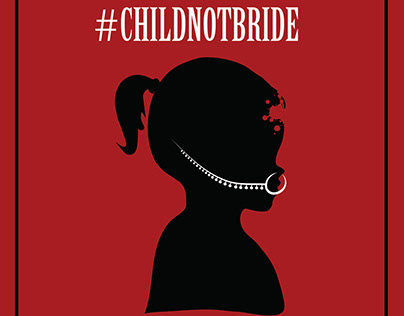A fresh study on child marriage in India, featured in the Lancet, highlighted a positive overall trend of decreasing child marriages nationwide. However, there are alarming statistics of child marriages of girls and boys that paint a concerning reality.
The study’s lens reveals an alarming landscape of child marriage prevalence in Indian states and Union Territories between 1993 and 2021. During the period from 1993 to 1999, 20% (6 of 30) witnessed an increase in girl child marriages. This unsettling trend escalated between 1999 and 2006, with 50% (15 of 30) experiencing a rise. However, the narrative took a positive turn from 2006 to 2016, marked by accelerated reductions in child marriage for girls.
What are the key findings?
In the paper titled ‘Prevalence of girl and boy child marriage across States and Union Territories in India, 1993–2021: a repeated cross-sectional study,’ a concerning revelation emerges: one in five girls and nearly one in six boys in India are still bound by marriage below the legal age.

The study applauds certain states for achieving significant decreases in child marriage prevalence. Still, it highlights a persistent struggle in states like West Bengal.
Child Marriage: Girls
The period between 1993 and 2021 witnessed a commendable decrease in the headcount of child marriages among girls across most states and Union Territories. Uttar Pradesh emerged as a frontrunner in this positive shift, showcasing the largest absolute decrease (a difference of 1,670,272).
Strikingly, this accounted for roughly one-third of the overall reduction in the headcount of child marriages among girls throughout India during the same period. However, West Bengal presented a stark contrast, experiencing the largest absolute increase, with over 500,000 more girls married as children, marking a substantial 32.3% rise (a difference of 500,346 individual girls).
)
Seven other states witnessed an unsettling increase in child marriages during this period.
Manipur stood out as the only state to see an increase in the prevalence of child marriage among girls. However, the spike was smaller than the surge observed between 1999 and 2006.
West Bengal showed the most significant absolute increase in headcount; Jharkhand took the lead in percentage increase with 53.1% (a difference of 186,936). At the same time, Assam and Bihar reported increases exceeding 50,000 more early marriages in 2021, representing a 13.1% rise since 1993 (a 2.6% increase).
Child Marriage: Boys
While not reaching the same absolute numbers as girls, the states of Manipur, Goa, and Gujarat witnessed increases in the magnitude of child marriages among boys between 2006 and 2021.
Gujarat, in particular, faced a significant burden, witnessing a 121.9% increase in the headcount of child marriages among boys (a difference of 231,842).

The burden of child marriages in boys is concentrated in specific states, with Gujarat (29%), Bihar (16.5%), West Bengal (12.9%), and Uttar Pradesh (8.2%) accounting for more than 60% of the overall load.
Examining child marriage in boys, Maharashtra deviates as an outlier with a high burden but low prevalence. In contrast, Manipur exhibits a high prevalence but a relatively low burden. Uttar Pradesh stands out as an outlier, featuring a relatively low prevalence but a high burden for child marriages in both girls and boys in 2021. Conversely, Tripura is an outlier with a high prevalence but a low burden.
Is the rate of child marriages approaching stagnation?
Despite significant strides, the study reveals evidence of stagnation, with the most substantial reduction in child marriage between 2006 and 2016. The all-India prevalence of child marriage in girls has seen a notable decrease from 49.4% in 1993 to 22.3% in 2021, while for boys, it dropped from 7.1% in 2006 to 2.2% in 2021.

In 2021, researchers found the headcount of child marriage to be 13,464,450 in girls and 1,454,894 in boys.
Between 2019 and 2021, the pace of reduction in child marriage for girls across states and Union Territories slowed compared to the period between 2006 and 2016. Alarmingly, six (16.7%) of the 36 states or Union Territories observed an increase in the prevalence of child marriage in girls during 2016–2021. Notably, Manipur and Tripura experienced a more significant surge than in any previous period.
Looking ahead
Despite substantial progress, evidence of stagnation raises concerns, emphasising the need for targeted interventions. States like Uttar Pradesh showcase commendable reductions, while outliers like West Bengal and Gujarat underscore the complex landscape of child marriages. Continued efforts are crucial to ensure sustained progress and address emerging challenges.
Some of the government’s initiatives to curb child marriage practices are:
- The ‘Prohibition of Child Marriage Act (PCMA), 2006’ enacted by the government, empowers State Governments to appoint Child Marriage Prohibition Officers (CMPOs) tasked with preventing child marriages and creating awareness about their detrimental effects.
- State Governments/ UT Administrations maintain data on awareness campaigns conducted under the PCMA Act. The Central Government complements these efforts through awareness drives, media campaigns, and advisories to States/ UTs on child marriage issues.

- The ‘Beti Bachao Beti Padhao (BBBP)’ scheme, led by the Ministry of Women and Child Development, focuses on gender equality and combating child marriages. CHILDLINE (1098), a 24/7 emergency service, collaborates with authorities to prevent child marriages.
- The National Commission for Protection of Child Rights (NCPCR) undertakes various activities, including camps and online reviews, engaging stakeholders to address child marriage issues. It identifies indicators based on child-related legislation and actively involves State Commissions for the Protection of Child Rights.
Though the efforts by the government are commendable, concerted efforts from both the society as well as the legislature are essential to break barriers and sustain positive momentum in the fight against child marriage.











